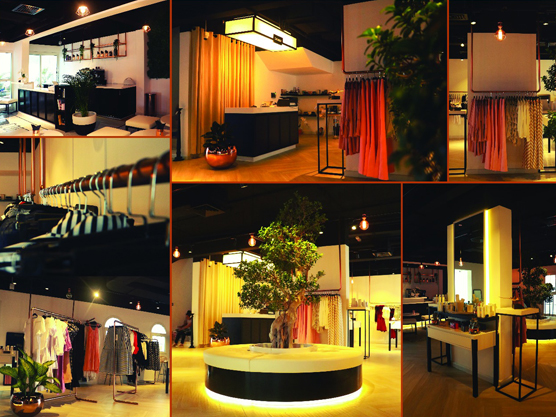Ways to Utilize Lighting Techniques Effectively in Retail Fit Out

Building a thriving retail setting extends past just the items you provide; it includes all component of your space, with lighting being one of the most significant impactful elements. Appropriate lighting not just accentuates your goods but also improves the overall atmosphere, setting the mood for your clients. In the fierce world of retail, knowing how to apply lighting effectively can be the difference between a casual shopper and a repeat customer.
As we investigate the basics of retail designs, it becomes clear that effective lighting design is a key component of your comprehensive strategy. Whether you are opening a fresh store or upgrading an existing space, understanding how to make use of lighting can increase sales and improve client experiences. With knowledge into modern trends and hands-on tips, this article will lead you through creating a retail space that captivates your audience and drives profitability.
Comprehending Retail Space Transformations
A commercial fit-out is the procedure of outfitting a commercial space for use, transforming it from a blank shell to a operational retail environment. This encompasses everything from the layout and design to the installation of fixtures and infrastructure. A well-executed fit-out not only improves the aesthetic appeal of a store but also guarantees that it meets the operational needs of the business. It is a crucial investment for retail owners looking to create a welcoming space that fosters customer engagement and boosts sales.
The importance of a retail fit-out cannot be overemphasized. A well designed retail space can significantly impact customer behavior and perceptions. Aspects such as lighting, colors, and materials play a crucial role in shaping the overall shopping experience. Additionally, the layout and flow of the space can determine how easily customers navigate the store, likely impacting the time they spend and items they purchase. Creating an environment that connects with the target market is critical for brand identity and loyalty.
As retail landscapes continue to evolve, understanding the latest trends and innovations in fit-outs is essential for businesses. Today’s consumers demand more than just products; they look for memorable experiences. By keeping up with current design trends and featuring smart technology, retailers can create spaces that not just attract customers but also offer them with an engaging and functional shopping environment. This strategic approach to fit-outs can set a retailer apart in a competitive market, making it a worthwhile consideration for any business owner.
Improving Consumer Engagement By Aesthetic
The layout of a shopping environment plays a important role in shaping consumer experience. From the instant customers enter a boutique, the design, colors, and fabrics used capture their focus and impact their view of the brand. Creating an appealing atmosphere motivates clients to stay more, explore more, and finally finalize transactions. Intentional architectural elements, such as broad aisles, pleasant seating areas, and intentionally placed products, can contribute to a more enjoyable retail experience that keeps clients to return.

Lighting is one of the most significant powerful decor tools merchants can use to enhance client experience. The ideal illumination can showcase products, create ambiance, and guide customers within the environment. Soft, cozy lighting can create a comfortable atmosphere, while intense, direct lighting might be more fitting for displaying specific items or fostering an exciting vibe. Merchants should think about how different illumination methods can be used to express their brand identity and elicit the intended emotions from their consumers.
Another, significant aspect of layout is integrating brand elements seamlessly throughout the retail layout. Uniform use of color schemes, fabrics, and promotional signage can reinforce the business identity and establish a unified atmosphere. Incorporating creative design features, such as participatory displays or digital screens, can also capture customer attention and enhance involvement. In the end, a thoughtfully-designed commercial space that emphasizes client satisfaction not just cultivate loyalty but can substantially boost overall sales.
Budgeting and Sustainability in Retail Fit-Outs
In today's competitive retail landscape, balancing budgeting and sustainability is crucial for a successful fit-out. Companies must carefully plan their budgets to include eco-friendly materials and practices. Allocating resources towards sustainable options not just contributes to environmental conservation but can also enhance the brand's reputation among increasingly conscious consumers. By prioritizing long-term savings through energy-efficient systems, retailers can establish a more sustainable business model while staying on budget.
Investing in sustainably sourced materials may have higher upfront costs, but these can lead to substantial savings over the long term. For example, choosing LED lighting can lower energy consumption and decrease utility bills. Additionally, retailers can explore grants or incentives available for businesses adopting green practices. Such financial aid can alleviate some of the initial costs associated with sustainable fit-outs, allowing businesses to meet their budgetary goals.
To achieve a successful balance between sustainability and budgeting, continuous evaluation is important. Retailers should frequently assess their materials and practices to identify areas for improvement. Working together with experienced professionals who specialize in sustainable design can help businesses navigate the challenges of pricing while ensuring adherence with green standards. By integrating https://postheaven.net/bookmargin3/this-ultimate-guide-to-retail-fit-out-basics into the budgeting process, retailers can create a fit-out that not only looks great but also beneficially impacts their bottom line and the environment.
